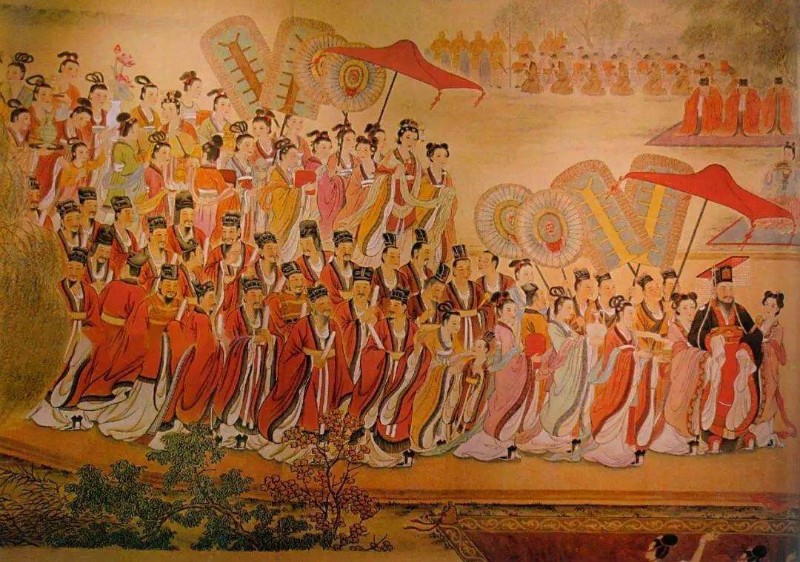justjlm.org – The term “Middle Kingdom” is an English translation of the Chinese term “Zhongguo,” which literally means “central country” or “central state.” This name reflects the ancient Chinese understanding of their place in the world, situated between the earth and the heavens, and at the center of civilization. The history of China, spanning over 5,000 years, is a tapestry of dynasties, philosophies, and cultural achievements that have shaped not only the country itself but also the broader world.
The Dawn of Chinese Civilization
The story of China begins with the Yellow River Valley, where the first Chinese dynasty, the Xia, is said to have emerged around 2100 BCE. However, it was the Shang Dynasty (c. 1600–1046 BCE) that left the first substantial archaeological evidence, including the famous oracle bones inscribed with early forms of Chinese characters. The Shang Dynasty was known for its bronze work, warfare, and a complex social structure.
The Golden Age of Chinese Philosophy
The Eastern Zhou Dynasty (770–256 BCE) marked a period of philosophical and cultural growth known as the Hundred Schools of Thought. This era saw the birth of Confucianism, Taoism, and Legalism, among other schools of thought. Confucius, the most famous Chinese philosopher, taught the importance of ritual, social order, and moral integrity. Laozi, the founder of Taoism, emphasized harmony with the Tao, the fundamental nature of the universe.
The Unification and the Great Wall
The Qin Dynasty (221–206 BCE) is renowned for unifying China under the rule of Qin Shi Huang, who declared himself the first emperor. His reign saw the construction of the Great Wall, the standardization of Chinese script, currency, and measurements, and the infamous burning of books and burying of scholars. Despite its short duration, the Qin Dynasty laid the foundation for a unified Chinese empire.
The Han Dynasty and the Silk Road
The Han Dynasty (206 BCE – 220 CE) is often considered a golden age of Chinese civilization. It was during this period that the Silk Road was established, facilitating trade and cultural exchange between China and the West. The Han Dynasty also saw advancements in science, technology, and the arts, as well as the spread of Confucianism as the state ideology.
The Tang and Song Dynasties: A Cultural Zenith
The Tang Dynasty (618–907 CE) and Song Dynasty (960–1279 CE) are celebrated for their cultural and technological achievements. The Tang capital, Chang’an, was one of the largest and most cosmopolitan cities in the world, attracting traders, scholars, and pilgrims from across the globe. The Song Dynasty, meanwhile, was a period of economic prosperity and innovation, including the invention of gunpowder, the compass, and movable type printing.
The Mongol Invasion and the Yuan Dynasty
The Mongol invasion, led by Genghis Khan and later his grandson Kublai Khan, resulted in the establishment of the Yuan Dynasty (1271–1368 CE). The Mongols expanded China’s borders to their greatest extent, but their rule was also marked by ethnic tensions and economic difficulties.
The Ming and Qing Dynasties: The Last Imperial Eras
The Ming Dynasty (1368–1644 CE) and Qing Dynasty (1644–1912 CE) were the last two imperial dynasties of China. The Ming Dynasty saw the construction of the Forbidden City and the Great Wall in its current form, as well as the voyages of Zheng He, which reached as far as Africa. The Qing Dynasty, founded by the Manchu people, expanded China’s territory to its modern borders but also faced internal rebellions and foreign imperialism in its later years.
The 20th Century and Beyond
The 20th century was a tumultuous period for China, marked by the fall of the Qing Dynasty, the establishment of the Republic of China, the Chinese Civil War, and the founding of the People’s Republic of China in 1949. The latter half of the century saw China’s transformation into a global economic powerhouse, navigating the complexities of modernization while striving to preserve its rich cultural heritage.
Conclusion
The history of China is a testament to the resilience and adaptability of its people. From the ancient dynasties to the modern era, China has been a cradle of civilization, a melting pot of cultures, and a beacon of innovation. As the Middle Kingdom continues to evolve, its journey through history remains a source of fascination and inspiration for people around the world.
